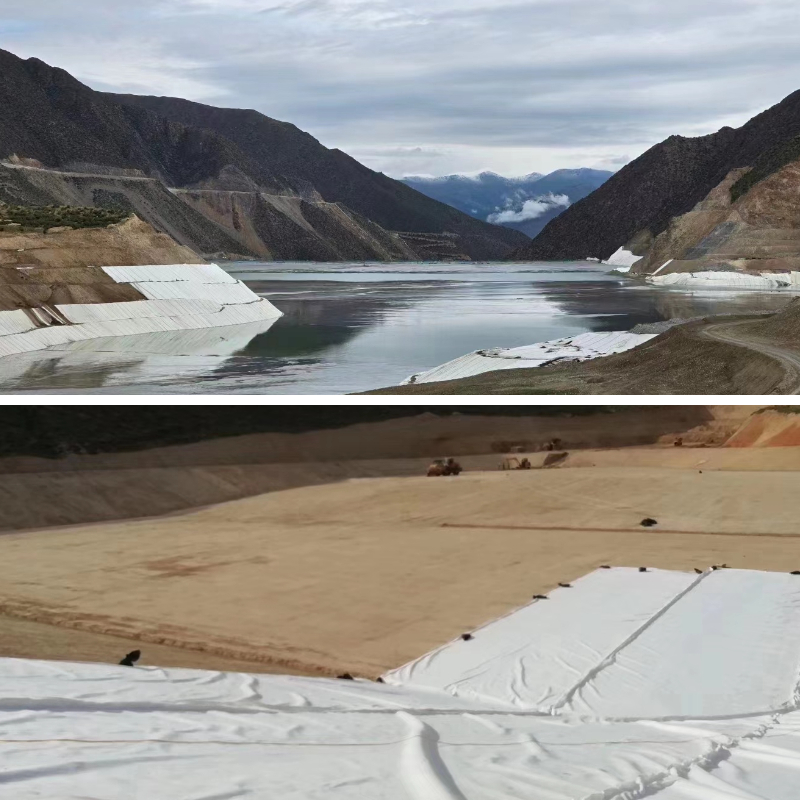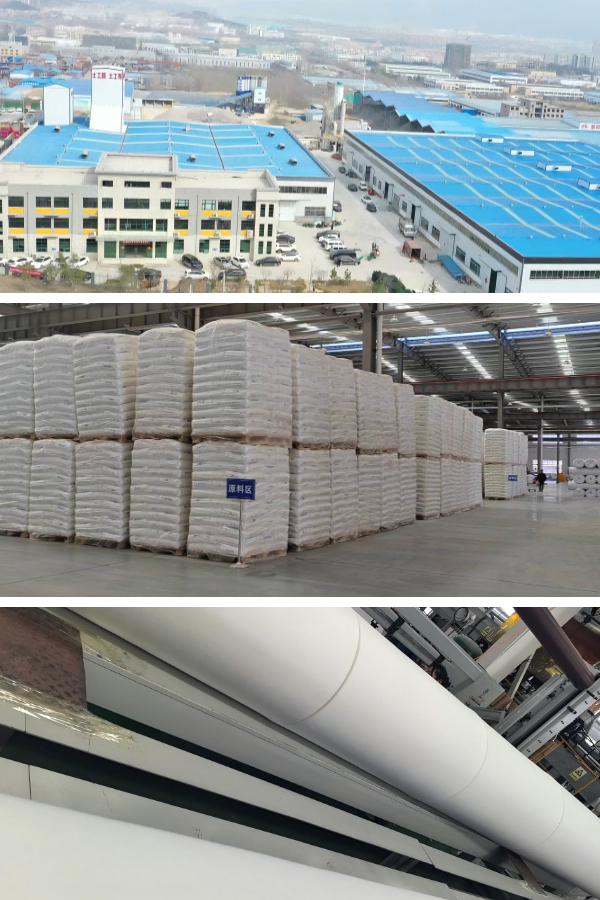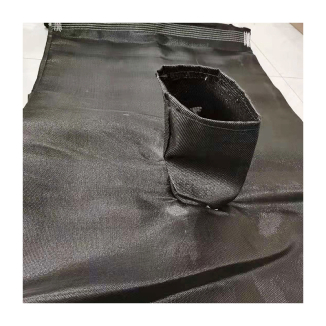How Geotextiles Work: The Science Behind Soil Stabilization and Filtration
In construction, landscaping, and civil engineering projects, soil steadiness and nice filtration are non-negotiable for long-term durability. Unstable soil leads to cracked roads, sinking foundations, and failed drainage systems—costly troubles that lengthen initiatives and compromise safety. This is the area geotextiles come in: versatile, lengthy lasting cloth designed to address these core challenges. But how exactly do they work? This article breaks down the science at the lower back of geotextile functionality, with a focal factor on soil stabilization and filtration, at the same time as highlighting key versions like geotech fabric, nonwoven geotextile fabric, and geotextile avenue fabric.
What Are Geotextiles, and Why Do They Matter?
Before diving into their mechanics, it’s quintessential to define geotextiles and their feature in present day engineering. Geotextiles are permeable material made from synthetic components (such as polypropylene or polyester) or natural fibers, engineered to interact with soil, water, and extraordinary constructing materials. Unlike everyday fabrics, they are designed to face up to harsh backyard conditions—including UV radiation, chemical erosion, and heavy loads—without breaking down.
The time length “geotech fabric” is often used interchangeably with geotextiles, referring to the same classification of supplies used in geotechnical applications. What makes geotextiles indispensable? They get to the bottom of two of the greatest troubles in groundwork: 1) retaining soil layers intact (stabilization) and 2) enabling water to glide via at the same time as trapping sediment (filtration). Without them, duties like avenue construction, embankments, or retaining partitions would require a methods higher expensive, resource-heavy solutions—such as altering complete soil layers or developing thicker concrete structures.
The Science of Soil Stabilization with Geotextiles
Soil stabilization is the technique of bettering soil’s strength, stiffness, and load-bearing potential to information constructions like roads, buildings, or bridges. Geotextiles excel proper right here via way of performing as a “reinforcement layer” that distributes weight evenly, prevents soil movement, and separates incompatible soil types. Let’s smash down the science:
1. Load Distribution: Spreading Weight to Prevent Compaction
When heavy hundreds (like motors on a avenue or constructing equipment on a site) press down on soil, they can cause localized compaction—where soil particles are squeezed together, decreasing pore location and weakening the soil’s functionality to help weight. Geotextile avenue fabric, a specialised geotextile designed for pavement applications, addresses this by performing as a tensioned membrane.
Here’s how it works: When a load is applied, the geotextile stretches slightly, transferring the weight at some stage in a massive neighborhood of soil. Instead of one small spot bearing all the pressure, the load is unfold out, lowering the stress on individual soil particles. This prevents excessive compaction and continues the soil’s structure intact over time. For example, in road construction, geotextile avenue material is laid between the subgrade (the natural soil) and the base direction (the layer of crushed stone beneath the asphalt). This separation ensures the base path doesn’t sink into the subgrade, even beneath repeated traffic loads.
2. Soil Separation: Keeping Layers from Mixing
Another key characteristic of geotextiles in stabilization is soil separation. In many projects, one of a form soil layers (e.g., great sand and coarse gravel) have different properties—if they mix, the soil’s load-bearing functionality drops dramatically. For instance, if great sand seeps into a gravel base course, the gravel loses its functionality to drain water and guide weight, predominant to potholes or avenue failure.
Geotech fabric acts as a bodily barrier that continues these layers separate. Its permeable form approves water to flow by means of (critical for drainage) on the other hand blocks soil particles from migrating. The fabric’s pore size is cautiously engineered: small adequate to entice high-quality soil particles alternatively large enough to hold away from clogging. This separation continues the integrity of each layer, making positive the soil retains its electricity and steadiness for decades.
3. Reinforcement: Adding Tensile Strength to Soil
Soil is sturdy in compression (when squeezed) then again prone in anxiousness (when pulled). Geotextiles—especially woven varieties—add tensile strength to soil, making it higher resistant to stretching or shearing (when layers slide preceding each other). This is integral for steep embankments or slopes, the region gravity can cause soil to pull apart and slide.
When embedded in soil, the geotextile’s fibers interlock with soil particles, developing a composite material that combines the soil’s compressive electrical energy with the fabric’s tensile strength. For example, in a maintaining wall project, nonwoven geotextile cloth (known for its flexibility and immoderate tensile strength) is wrapped spherical soil layers and anchored to the wall. This reinforces the soil, stopping it from pushing the wall outward and inflicting collapse.
The Science of Filtration: How Geotextiles Control Water Flow
Water is one of the biggest threats to soil stability. Excess water softens soil, reduces its load-bearing capacity, and motives erosion. Geotextiles clear up this by using filtration: the manner of enabling water to drain at the same time as trapping sediment that would in any different case clog drainage buildings or contaminate shut by way of water sources.
1. Permeability: Balancing Water Flow and Sediment Trapping
Filtration starts offevolved with permeability—the potential of a geotextile to allow water to leave out through. Unlike impermeable substances (like plastic sheeting), geotextiles are designed to be porous, alternatively their pore dimension is calibrated for specific applications. For filtration, the reason is to let water waft freely at the same time as stopping soil particles from transferring with it.
Nonwoven geotextile cloth is particularly first-rate for filtration due to the truth of its random fiber structure. Unlike woven geotextiles (which have a grid-like pattern), nonwoven cloth have a dense, fluffy texture with tiny pores that act like a sieve. When water flows by means of the fabric, high-quality soil particles (like silt or clay) get trapped on the ground or internal the fabric’s fibers, while convenient water continues through to drainage systems. This prevents clogging of pipes or gravel layers and continues sediment from polluting streams or groundwater.
2. Preventing Erosion: Protecting Soil from Water Runoff
Erosion takes vicinity when transferring water (like rainwater runoff) washes away topsoil or destabilizes slopes. Geotextiles act as a protective barrier, defending soil from the stress of water at the same time as on the other hand allowing drainage. For example, in landscaping projects, geotech material is laid over bare soil formerly than together with mulch or gravel. The cloth stops soil from washing away in the route of heavy rains, even as water seeps via to nourish plant existence or drain into the ground.
In coastal or riverbank projects, geotextiles are commonly used in conjunction with rocks or sandbags to create “armor” in opposition to wave movement or fast-moving water. The fabric offers a flexible layer that absorbs impact, stopping soil erosion and defending infrastructure like bridges or shorelines.
3. Maintaining Drainage Efficiency: Avoiding Clogging
A universal subject with filtration elements is clogging—over time, trapped sediment can block pores, stopping water from flowing through. Geotextiles are engineered to minimize this hazard through two key design features:
Graded Filtration: The fabric’s pore size is large than the soil’s pore size, enabling water to waft barring forcing soil particles into the fabric. Instead, particles are trapped on the surface, forming a “filter cake” that simply improves filtration over time (the cake traps even smaller particles at the same time as letting water pass).
High Porosity: Nonwoven geotextile fabric, in particular, has a immoderate void volume (the location between fibers), which potential it can maintain greater sediment until now than clogging. This extends the fabric’s lifespan and reduces the choose for acquainted replacement.
Choosing the Right Geotextile for Your Project
Not all geotextiles are created equal—selecting the appropriate variety depends upon on your project’s wishes (stabilization, filtration, or both) and the soil conditions. Here’s a fast data to the most standard types:
Woven Geotextiles: Made by using weaving synthetic threads into a grid pattern, these are strong, stiff, and quality for stabilization (e.g., geotextile avenue fabric for avenue bases). They have low permeability, so they’re satisfactory for duties the vicinity load distribution and soil separation are priorities.
Nonwoven Geotextiles: Made through the usage of bonding or needle-punching fibers together, these are flexible, porous, and pleasant for filtration (e.g., draining sports activities activities fields or retaining walls). Nonwoven geotextile fabric is moreover used for erosion control, thanks to its functionality to entice sediment and allow water flow.
Knitted Geotextiles: Less common, these are surprisingly flexible and used for quick initiatives (like improvement internet site on line erosion control) or areas with uneven terrain.
Conclusion: Geotextiles—The Unsung Heroes of Stable, Durable Projects
Geotextiles may additionally moreover now no longer be the most viewed area of a constructing or landscaping project, then again they are amongst the most critical. By leveraging the science of load distribution, soil separation, and managed filtration, geotech fabric, nonwoven geotextile fabric, and geotextile avenue fabric make positive initiatives are stronger, greater durable, and more cost-effective. Whether you’re establishing a road, a conserving wall, or a outdoor bed, geotextiles furnish a simple, sustainable reply to soil steadiness and water management.
By perception how geotextiles work, you can make educated alternatives that protect your venture from regular pitfalls—saving time, money, and problems in the prolonged run.
Contact Us
Company Name: Shandong Chuangwei New Materials Co., LTD
Contact Person :Jaden Sylvan
Contact Number :+86 19305485668
WhatsApp:+86 19305485668
Enterprise Email: cggeosynthetics@gmail.com
Enterprise Address: Entrepreneurship Park, Dayue District, Tai 'an City,
Shandong Province








